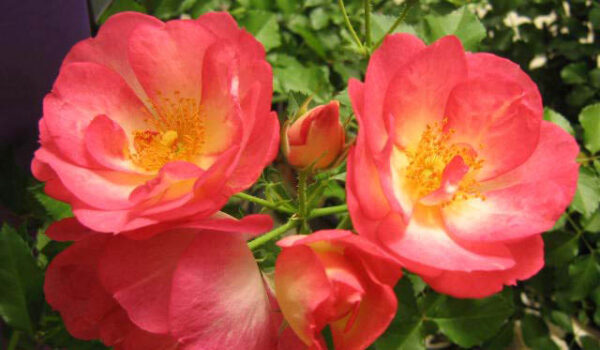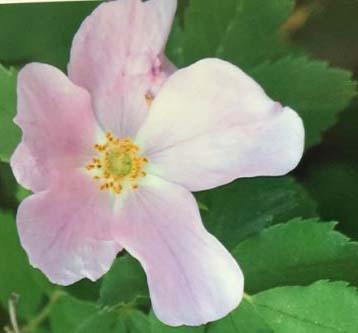The Society of American Florists estimates that over 250 million roses are bought each Valentine’s Day. But why limit the rosy romance to once a year? The State Publications Library’s digital repository has many resources from the Colorado State University Extension that can help you grow your own roses all year long!


Roses are well-suited to Colorado’s sunny weather and low humidity. In fact, roses have been growing in Colorado as far back as 35 million years ago; one of the oldest rose fossils was found in the Florissant Fossil Beds in Florissant, CO. Colorado has four native rose species that you can spot in the wild and in gardens, although many more domestic varieties are grown today.
Although every resource says that roses grow well in Colorado, I’ve personally had terrible luck. If I had read the thorough planting and maintenance instructions available from CSU Extension, my poor roses would have had a much better chance of survival! Learn from my mistakes and check out the resources below before planting your roses.
Selecting and Planting Roses (Gardening Series no. 7.404)
This publication contains information that will assist gardeners with choosing healthy rose plants, advice for appropriate soil, and tips on planting locations. A few things that I learned:
- Roses can be grown almost anywhere in Colorado, and Colorado roses are considered to have some of the most vividly colored flowers seen in the country.
- Roses should be planted in a location that gets 5-6 hours of sunlight per day.
- Immediately after planting, the entire rose plant should be covered with “loose, loamy, moist” soil to prevent the rose canes (stems) from drying out in Colorado’s dry climate while the plant establishes its root system. This is apparently very important!
Rose Culture (Gardening Series no. 7.416)
After planting your roses, Rose Culture will help you keep the plants healthy and thriving. This publication contains information about common pests that threaten roses, tips for keeping the rose plant alive during the winter, and many pruning diagrams. A couple tips I thought were interesting:
- Rose plants are still thirsty in the winter when they are in a dormant state. Snow typically provides enough moisture to keep the plants alive, but roses need to be watered if the winter is particularly dry.
- Spider mites can be removed from rose plants with a “forceful spray of water.”
- Get out your protractor – rose canes should be pruned at a 30- to 45-degree angle. Pruned ends can be sealed with regular white craft glue to prevent carpenter bees from boring into the canes.

For even more information, CSU Extension has also created several videos about growing roses in Colorado as part of their PlantTalk project. With all these tips, our roses are sure to flourish, and we’ll be able to celebrate Valentine’s Day every day!
- Celebrating Colorado’s immigrant heritage - June 27, 2025
- Colorado’s Scenic and Historic Byways: Guanella Pass - June 6, 2025
- Who is protecting Colorado’s pollinators? - May 16, 2025